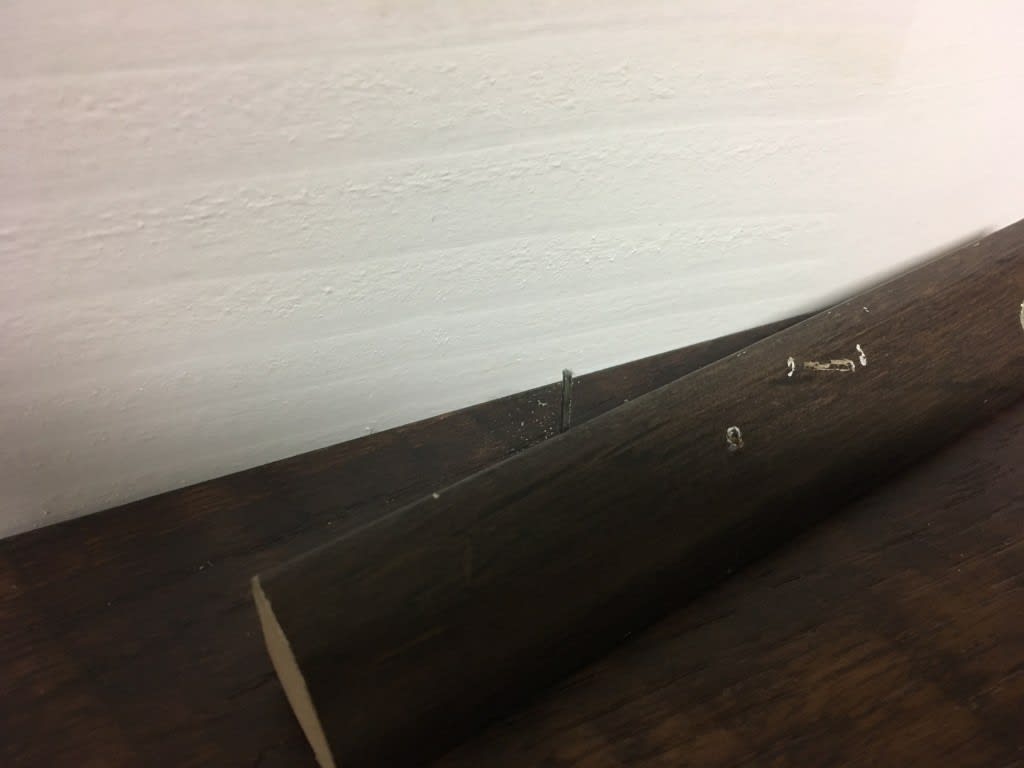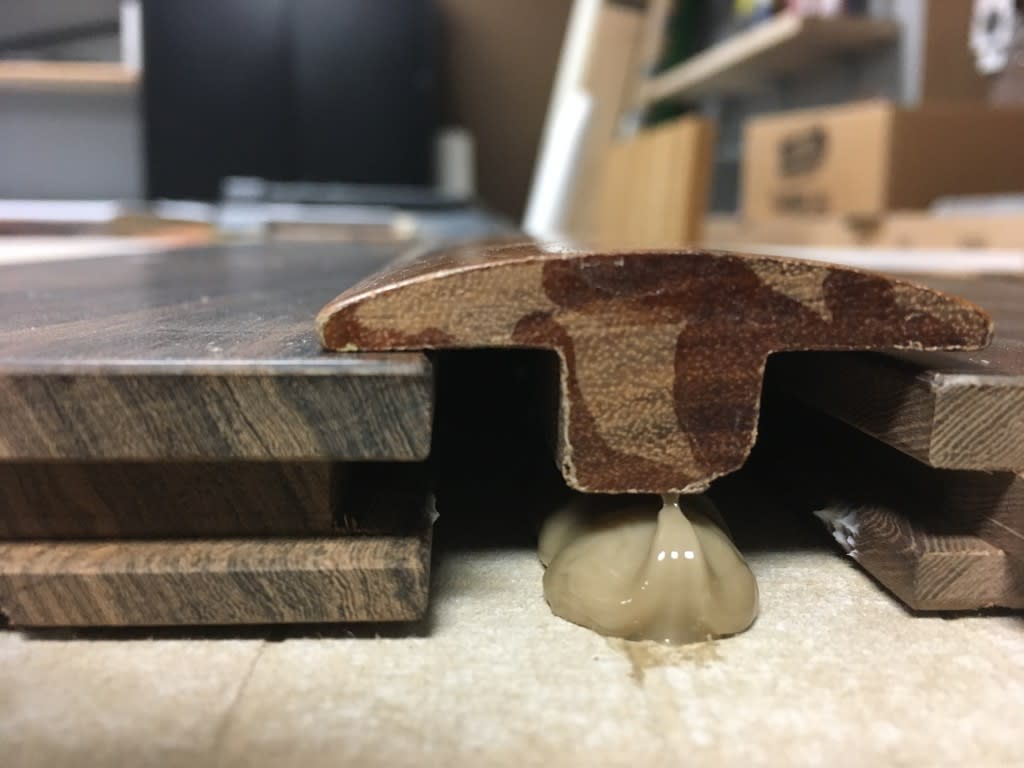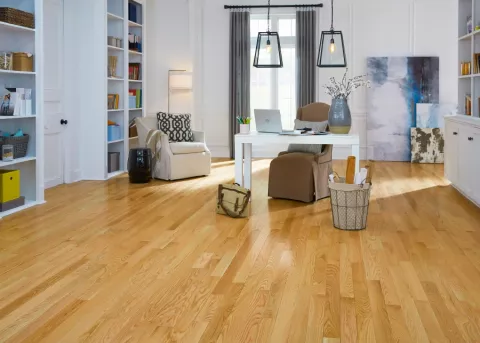- Home
- Education
- Flooring Basics
- Avoid These Transition Install Mistakes | Common Flooring Problems
Avoid These Transition Install Mistakes | Common Flooring Problems
Floating Floors: Installation Mistakes and Corrections
Transitions and trim complement the flooring and provide a safe durable way to create expansion/contraction space between areas, and lead to other existing floors in the home.
Like icing on a cake, transitions are typically the last materials to complete the floating floor project. When installed correctly they can last for years, but when installed wrong they can contribute to gapping, buckling, peaking, and squeaking issues. They could even become loose creating a safety concern.
Here are some common floating floor transition and trim install mistakes that can lead to potential repairs down the road.
One common mistake is gluing or nailing transition strips to the floating floor and the subfloor
Floating floors are designed to expand and contract freely, so they should never be secured to any fixed objects. Gluing the trim to the flooring and subfloor can lead to gapping as the other planks contract or buckling if expansion occurs.
In vinyl click floors, end joint peaking can occur, which eventually can cause end joints to break.

Fastening quarter round into the floating floor
Another mistake is nailing or gluing the quarter round onto the floating floor. This prevents the flooring from being able to move freely, as a floating floor is intended to do.
This causes a "pinch point" that can potentially lead to gapping, buckling, or end joint peaking.
Quarter round should always be fastened into the base boards, and base boards should be fastened to the wall studs, or adhered to the drywall.

Installing the flooring too tight to the transition molding
Floating floors require an expansion gap around all fixed objects. Fixed objects include walls, pipes, trim, and transitions.
Floating floors will expand and contract with changes in the interior home climate. Not leaving the proper expansion gap around all fixed objects could lead to buckling, squeaking, or end joint peaking.

Not achieving a good bond with the adhesive
Always make sure the adhesive being used is compatible with both a) the transition molding and b) the surface you're bonding to.
Also, make sure the surfaces are clean from contaminates, old adhesive residue, sealers, paint, and drywall mud.
Two-part epoxy adhesives are great for a strong bond to a variety of surfaces. Hot melt adhesives and urethane adhesives are also commonly used for transition installations.
The molding should be in full contact with the adhesive. If there is a void between the bottom of the molding and the subfloor where the bead of adhesive is applied, you won't get a good, strong bond.
The molding should push into the adhesive to flatten it out. Cut a wood shim to fill the gap between the bottom of the molding and the subfloor. Bond the shim to the subfloor and then bond the molding to shim...in some cases weight may have to be applied to the molding to keep it in contact with the adhesive until it cures.

Installing flush transitions with a floating floor
Flush transition moldings are commonly used to complement nailed down or glued down wood floors.
Floating floors however, require over-lap transition moldings to be used. Over-lap moldings are designed to transition to other floors, while still providing an expansion gap so the flooring can have freedom to expand and contact with indoor climate changes.
Installing a floating floor to a flush transition molding can potentially lead to buckling, end joint peaking, and squeaks later on.
For installing on stairs, where the floating floor is glued down to the existing treads, flush stair nosing can be used if available.

Also, do you like ideas and how-to videos about design and decor on YouTube?
Please SUBSCRIBE to the LL Flooring YouTube Channel to learn more, leave comments or ideas that helped you, and join the community!
Are you a flooring contractor or remodeler? Get the lowest PRO pricing, dedicated expert service, and store benefits today: https://www.llflooring.com/support-pro/
Do you learn about home improvement and design with videos? Subscribe to the LL Flooring YouTube Channel to learn more, leave comments or ideas that helped you, and join the community!
In this video, flooring install expert Mark shows details of how to install Duravana Hybrid Resilient Flooring. If you have any questions please contact our customer care team.


